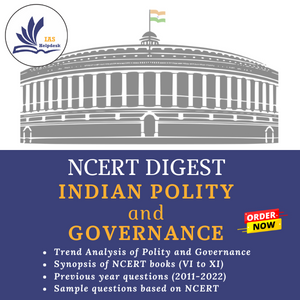What is Institution of Eminence?
Description
Institution of Eminence
India has been facing a persistent brain drain due to the belief that Indian institutions cannot hold a candle to foreign ones. The number of Indian students flying off to the US, Europe and Australia for their post graduate, and lately even undergraduate, degrees has risen sharply. If India had home-grown Institutions of Eminence, there would be no need to fly abroad for fancy degrees.
Hence UGC has considered the reports of the Empowered Expert Committee (EEC) appointed by Government under the Chairmanship of Shri N Gopalaswami which recommended names of 15 Public institutions and 15 Private institutions to give the status of Institutions of Eminence (IOE).
However, 10 public and 10 private institutions have been selected for IoE status. There are many Institutes which, after being selected for the Institution of Eminence (IoE) Status, are still waiting for the IOE status for more than three years.
About IOEs
• The institutes of eminence scheme are under the Union human resource development (HRD) ministry and aims to bring higher educational institutions selected as IoEs in top 500 of world ranking in the next 10 years and in top 100 eventually overtime.
• The scheme has been launched with an objective to provide world class teaching and research facilities to Indian students within the country and enhance general level of education of the country.
• The selection shall be made through challenge method mode by the Empowered Expert Committee constituted for the purpose.
• Eligibility: Only higher education institutions currently placed in the top 500 of global rankings or top 50 of the National Institutional Ranking Framework (NIRF) are eligible to apply for the eminence tag.
Objective:
• Excellence and Innovation: To provide for higher education leading to excellence and innovations in such branches of knowledge as may be deemed fit at post-graduate, graduate and research degree levels.
• Specialization: To engage in areas of specialization to make distinctive contributions to the objectives of the university education system.
• Global Rating: To aim to be rated internationally for its teaching and research as a top hundred Institution in the world over time.
• Quality Teaching and Research: To provide for high quality teaching and research and for the advancement of knowledge and its dissemination
Institution of Eminence will get:
• greater autonomy viz. to admit foreign students up to 30% of admitted students; to recruit foreign faculty upto 25% of faculty strength; to offer online courses upto 20% of its programmes;
• to enter into academic collaboration with top 500 in the world ranking Institutions without permission of UGC;
• free to fix and charge fees from foreign students without restriction;
• flexibility of course structure in terms of number of credit hours and years to take a degree;
• complete flexibility in fixing of curriculum and syllabus, etc.
• Each Public Institution selected as IoE will be provided financial assistance up to Rs. 1000 Cr over a period of five years.
Academic institutions that can impart highest quality education, generate cutting edge research, and attract the best and the brightest from across the globe can have multiplier beneficial effects for the country. So the idea of elevating the best in a sector to an eminent status by granting autonomy is a good one. But to maintain credibility, the process and the selection of these institutions should be above reproach.

